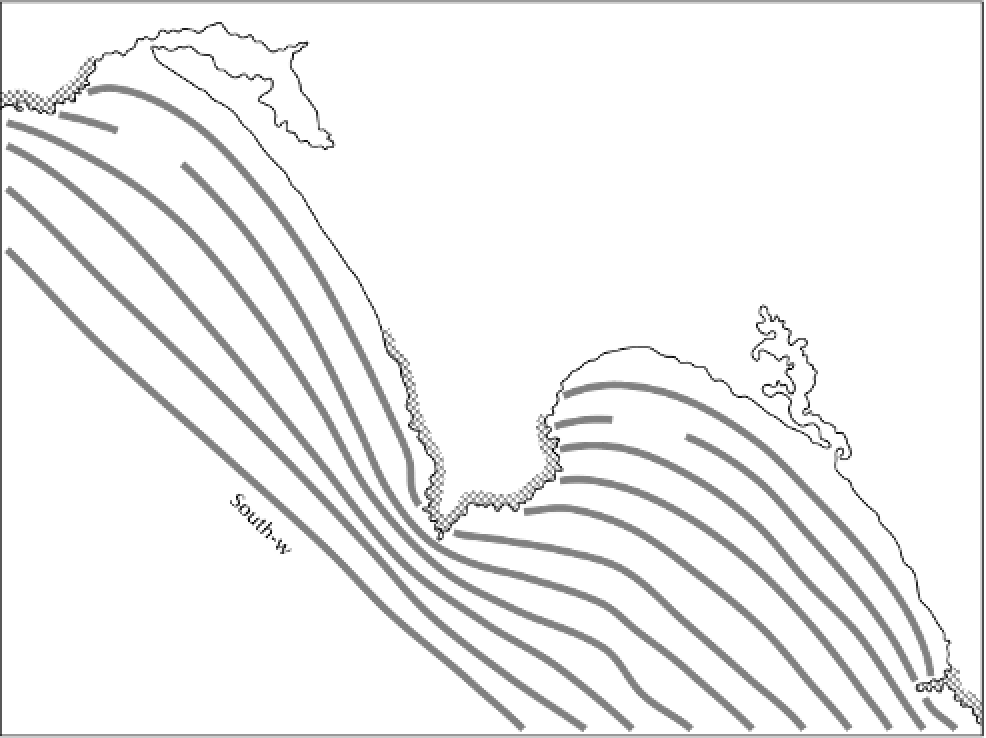Geology Reference
In-Depth Information
Cape
Paterson
10 km
Anderson
Inlet
N
Venus
Bay
Shallow
Inlet
Waratah
Bay
Cape
Liptrap
Sandy beach
Rocky shore
Figure 13.10
Zetaform beaches: Venus Bay and Waratah Bay, Victoria, Australia.
Source:
Adapted from Bird (2000, 119)
called '
serpentines
'.
Comet-tail spits
form where long-
shore movement of material down each side of an island
leads to accumulation in the island's lee, as has happened
at the Plage de Grands Sables on the eastern end of the
Île de Groix, which lies off the coast of Brittany, France.
Arrows
are spit-like forms that grow seawards from a
coast as they are nourished by longshore movement on
both sides. Sometimes spits grow towards one another
owing to the configuration of the coast. Such
paired
spits
are found at the entrance to Poole Harbour, in
Dorset, England, where the northern spit, the Sandbanks
peninsula, has grown towards the southern spit, the
South Haven peninsula.
Forelands
or
cuspate spits
tend to be less protuberant
than spits. They grow out from coasts, making them more
irregular.
Spits and forelands
Barrier spits
often form at the mouths of estuaries and
other places where the coast suddenly changes direction.
Sediment moving along the shore is laid down and tends
to extend along the original line of the coast. Some spits
project into the ocean and then curve round to run
parallel to the coast. An example is Orfordness on the
east coast of England, where the River Alde has been
deflected some 18 km to the south.
Recurved spits
have
their ends curving sharply away from incoming waves
towards the land, and compound recurved spits have a
series of landward-turning recurved sections along their
inner side. Blakeney Point, which lies in north Norfolk,
England, is a famous recurved spit. Spits that have twist-
ing axes, created in response to shifting currents, are




















